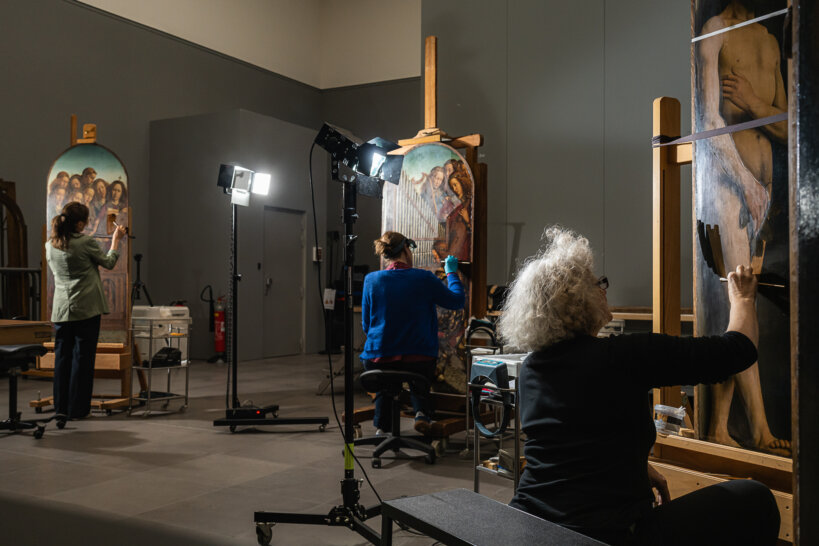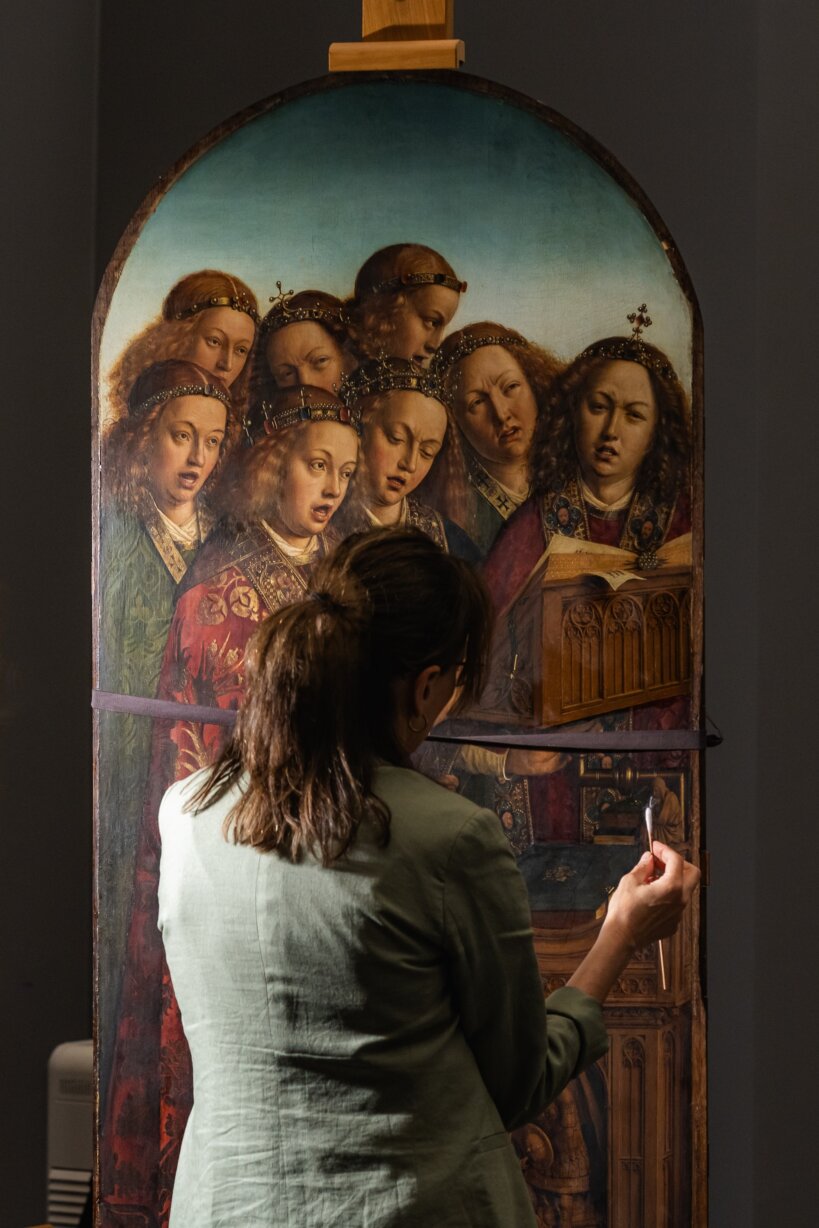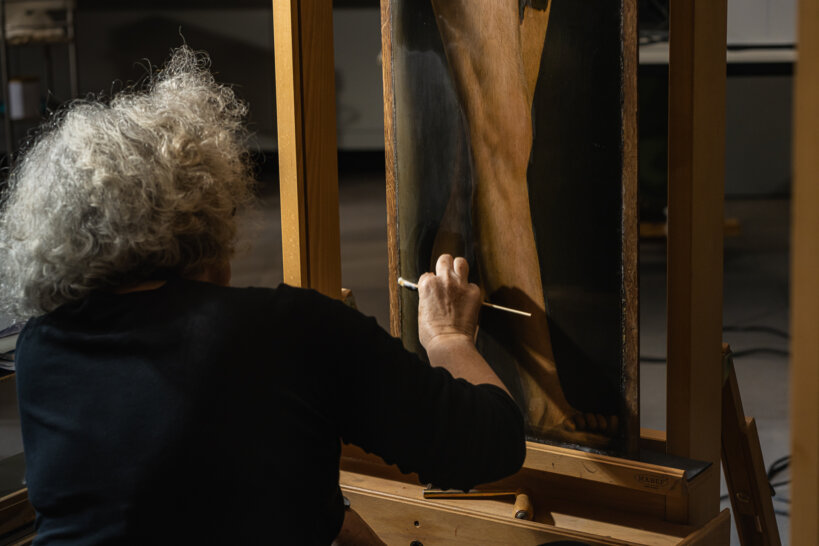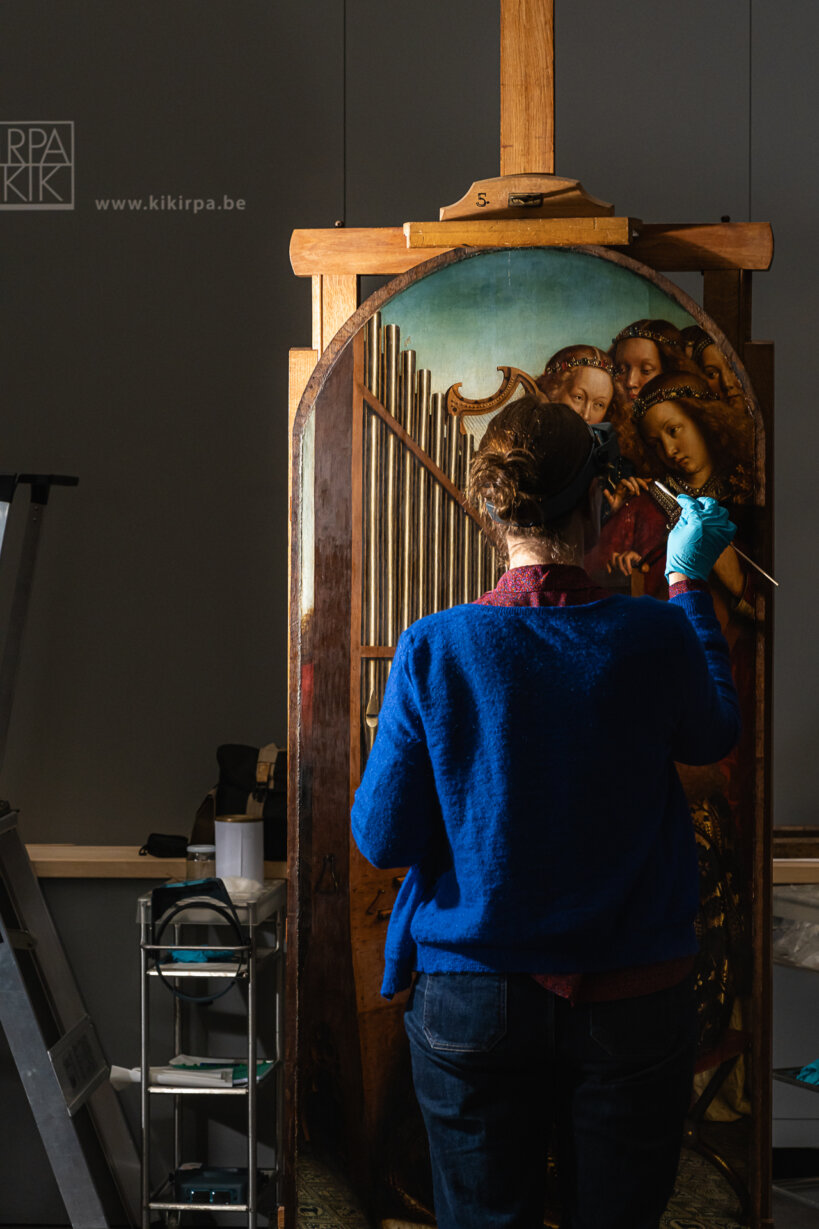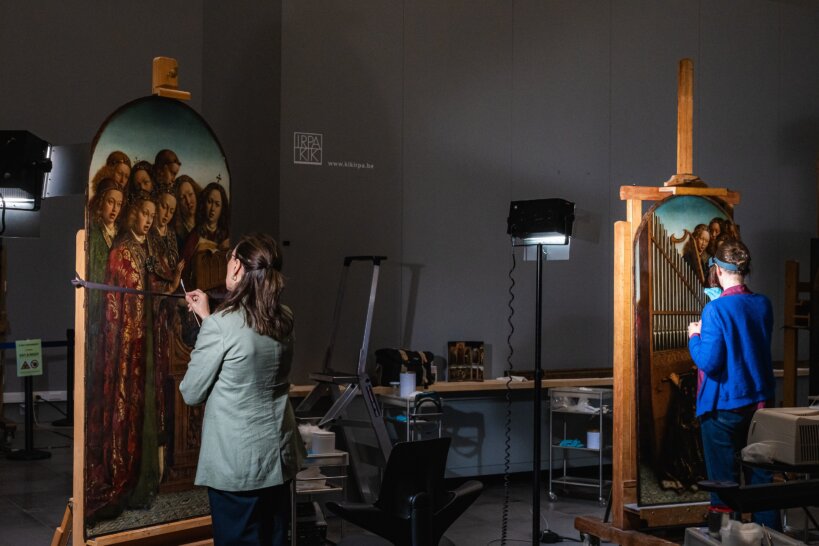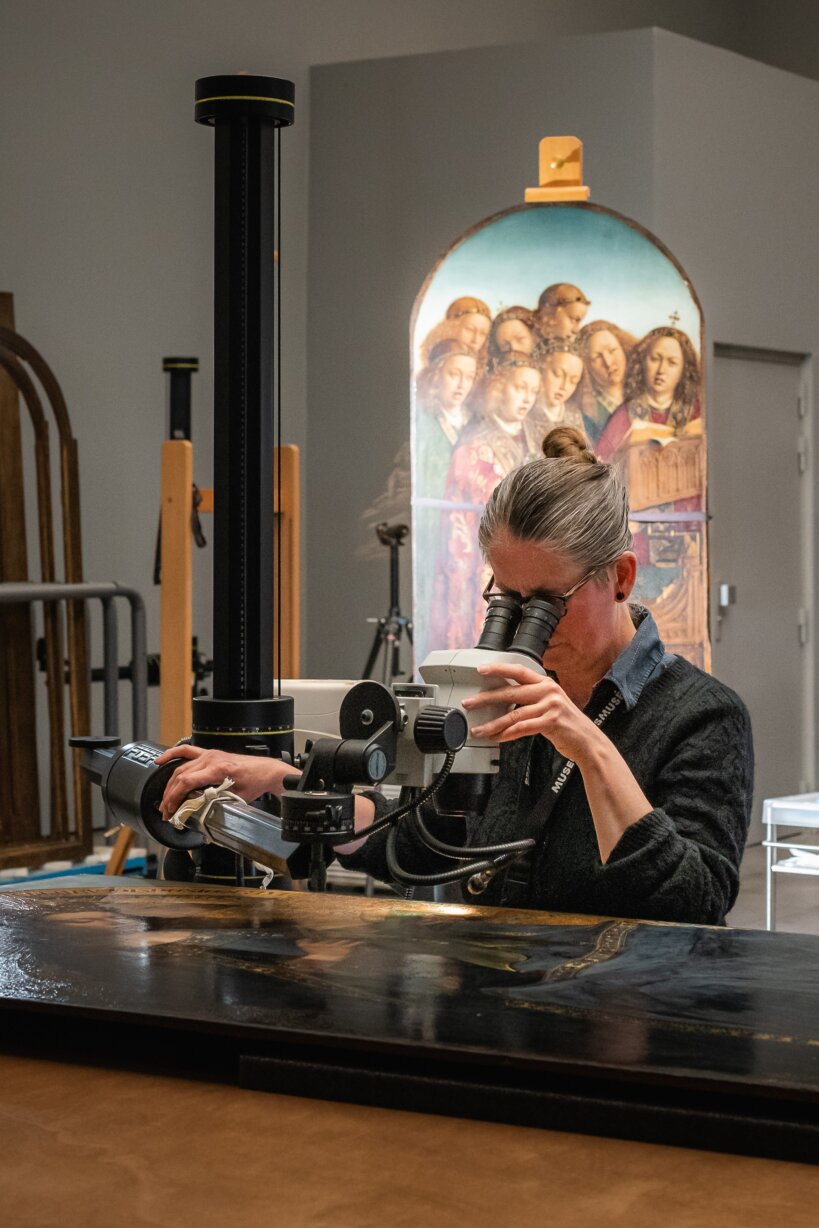From 2023, seven panels of The Adoration of the Mystic Lamb by the Van Eyck brothers (more commonly known as the Ghent Altarpiece) will be restored in the heart of the MSK. You could already follow the campaign from 2012 to 2019, and now the remaining panels are coming to the museum for the final restoration phase. During the week, you can see the restorers of the Royal Institute for Cultural Heritage (KIK) live at work, in the studio behind glass. During the weekend the panels are placed on a location visible to visitors.
The first phase of the restoration was completed at the end of 2016, the second phase at the end of 2019. The restored exterior panels and the five panels from the lower register of the altarpiece then returned to the visitor centre in St Bavo Cathedral and can still be viewed there.
For the third phase of the restoration, the 5 upper panels of the opened altarpiece are transferred to the museum. The central classical Deësis arrangement of God, flanked by the Virgin Mary and John the Baptist and the panels with angels playing music and the figures of Adam and Eve will be on display at the MSK. This final phase of is set to finish in 2026.
Despite the public nature of the restoration, the visitors can witness the restoration live behind glass in the museum, the restorers are not permanently present in the workplace. Besides the restoration itself, they also execute scientific research beside the scenes. The results of this research will be published afterwards.
Throughout the centuries, the Ghent Altarpiece underwent several conservation treatments. According to the sixteenth-century Ghent historian Marcus van Vaernewyck, the predella (the bottom part of the altarpiece), representing “Hell”, was damaged during a poorly executed cleaning. Around 1550, the two painters Lanceloot Blondeel and Jan van Scorel restored the altarpiece. Since then, about every generation has meddled with the altarpiece, giving rise to thick layers of varnish and overpainting.
During an emergency intervention and study in 2010, the structural condition of the altarpiece was assessed. The Getty Foundation in Los Angeles provided the funds for this campaign and the experts produced documentation of unprecedented detail that was made available to the public through the website “losertovaneyck.kikirpa.be. It soon became clear, however, that more thorough conservation treatment and research of the Ghent Altarpiece were necessary. This assessment paved the way for the current campaign and the altarpiece’s long-term conservation.
The Royal Institute for Cultural Heritage (KIK-IRPA, Brussels) has been tasked with the restoration. The restorers have studied the condition of the paint and varnish layers, teaming up with scientists. Microscopic paint samples were analysed in the labs of the KIK-IRPA. To complete their observations, the restoration team is using the most advanced technology, including the macro-XRF scanner, developed by the University of Antwerp, to confirm the presence of overpaint and assess the condition of the original paint layers. In parallel with the restoration, KIK-IRPA, Ghent University and the University of Antwerp are conducting various research projects that should shed more light on the altarpiece’s history, its condition and how it was created. This should be conducive to a better understanding of the meaning of this complex yet fascinating artwork, which has yet to reveal all of its secrets almost six centuries after its creation. To date, the Ghent Altarpiece has continued to exert a great attraction on specialists and art aficionados alike.
During a first phase the cracked and yellowed varnish layers were removed from the exterior panels. Besides this, paint layers, which had come loose were consolidated. The most surprising conclusion, however, was that close to 70% of the altarpiece’s total surface had been overpainted and was therefore not of Van Eyck’s hand. This overpaint was likely applied by Van Scorel and Blondeel in order to hide damages, dirty varnishes and incompetent earlier restorations. The overpaint was removed in several places, including among others on the wall under the window sill in the Annunciation Scene and on the robes of Joos Vijd, Elisabeth Borluut and the Eritrean Sibyl. The original paint layer was in rather good condition in most zones. Reappearing losses were carefully filled and retouched. The altarpiece’s original stunning colour was once again revealed. The detailed representation of light and textures, for which Van Eyck has been praised and famed for centuries, also reappeared. The depth, which contributes to the sculptural presence of the figures, has also been restored. We have gained a better insight into how Van Eyck conceived this illusory space through the restoration of the polychromy of original frames, representing a stone construction, which had become completely obscured. The illusionist rendition of their cast shadows is again clearly visible on the paintings. And as is the case with any modern restoration, all additions can be reversed and all interventions are exhaustively documented.
The second phase of the project concerned the restoration of the bottom register on the interior panels: the central panel depicting the Adoration of the Mystic Lamb, the Knights of Christ, the pious Hermits and Pilgrims. The copy of the panel of the Just Judges was not part of the project as it had already undergone conservation in 2010. The restorers encountered similar issues as during the first phase. There too, overpaint was added over time and was removed carefully to reveal the brothers van Eyck’s astounding work. The revelation of the face of the original Lamb, with large, staring eyes placed frontally and evoking a human face took the world by storm.
The current , third and final phase concentrates on the upper register with the enthroned figures of God, the Virgin Mary and St. John the Baptist, the singing and music playing angels and Adam and Eve. There is no doubt that, here too, overpaint was added over time, which preferably should be removed. This third phases includes new challenges, such as the treatment of particularly fragile zones of brocade imitations in tin relief on the thrones of the central figures, as well as other polychromies on silver and gold. The restorers should complete the restoration in April 2026. Then the altarpiece will be seen back in its completely restored state in the Sacrament’s Chapel of St. Bavo’s Cathedral.
